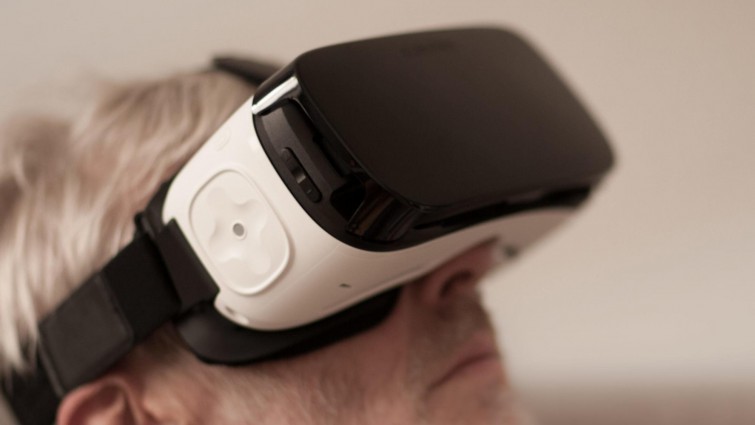“When I look through these glasses, I find myself in this operating room. I can turn around. I can also move freely. Now at least I feel like I’m in surgery.”
Lars Resig studies not medicine, but information technology: at the University of Bremen, he and his colleagues have developed an interactive virtual operating room. Now he’s wearing big black glasses that transport him to virtual reality: a patient lies in front of him, two bare feet peeking out from under the green operating room blanket. The patient’s abdomen is open and moving organs can be seen. In the future, computer scientists can imagine that new surgeons will first learn here:
“This virtual operating room would be appropriate if the organs in this virtual patient were more realistically designed, so that this course of dissection could be performed interactively. This would give new surgeons a chance to undergo such an operation, at least partially performed beforehand so that they would not have to The surgeon has to train the correct operation on the real patient, and then errors may occur.
Learning and working in virtual reality – that’s what Lukas Reisig and many other computer scientists across the country are looking for. At the conference at Bielefeld University, they share experiences and present their projects. Thies Pfeiffer conducted research at Bielefeld University and organized the conference:
“With virtual or augmented reality, it’s about transmitting digital content to a person in a way that makes the person believe that content is real to them. In other words, the sensory impressions that become something real for you.”
Virtual reality can help simulate business processes more effectively
Thies Pfeiffer and other scientists believe this virtual reality can help simulate business processes more effectively and save costs in the future. In addition, virtual reality – VR for short – aims to revolutionize studies and training. Thies Pfeiffer wants to use virtual reality to bridge the gap between theory and practice:
“Many things are processes that you have to learn. Business processes that have to be followed in the right order. And these things can be well trained in such things. You know that from games, where you often react very quickly and so are the mechanics of this game specifically – The counterpart will now be the working process that you have to learn – if you can practice it in that fun way in virtual reality, you are already training in terms of processes and you can then use it to skip the hands-on and spend less time on the hands-on.”
In general, virtual reality is somewhat reminiscent of video games: the user moves subjectively through a moving space. Michaela Dirking sits in front of a large screen showing a realistic model of wind turbines. Dirking’s company, Virtalis, translates such models into virtual reality. With a few clicks of the mouse it is directly above the wind turbine in the turbine:
“Now I have the opportunity here to navigate inside the turbine or wind turbine. You have the opportunity to manipulate things within that landscape. Parts that you might have to install or remove for maintenance, reposition them. To see if there are collisions somewhere that might stand in the way of repair.” This is a perfect tool for learning something like this virtually.”
For example, engineers can use the hypothetical model to learn how to fix wind turbines without having to climb dizzying heights each time. Another advantage: using a virtual screwdriver, the computer checks whether everything is done correctly and calculates errors. It can be repeated as often as you like – at no additional cost. This is Fiverr:
“With a virtual simulator like this, you can prepare 30 people. Then shorten the training time in the real environment. Apart from that, it is more fun in virtual reality. So that you can combine real actions with fun stimulus. So you can not only win success in learning You can even collect points and then compare yourself with your fellow students. So maybe more motivation can be built up to do some action well.”
Virtual reality will change the way we work and learn in the future – the experts at Bielefeld are sure of that. And as high-tech devices get cheaper and more affordable, the journey to virtual reality may soon become everyday life.

“Certified gamer. Problem solver. Internet enthusiast. Twitter scholar. Infuriatingly humble alcohol geek. Tv guru.”





